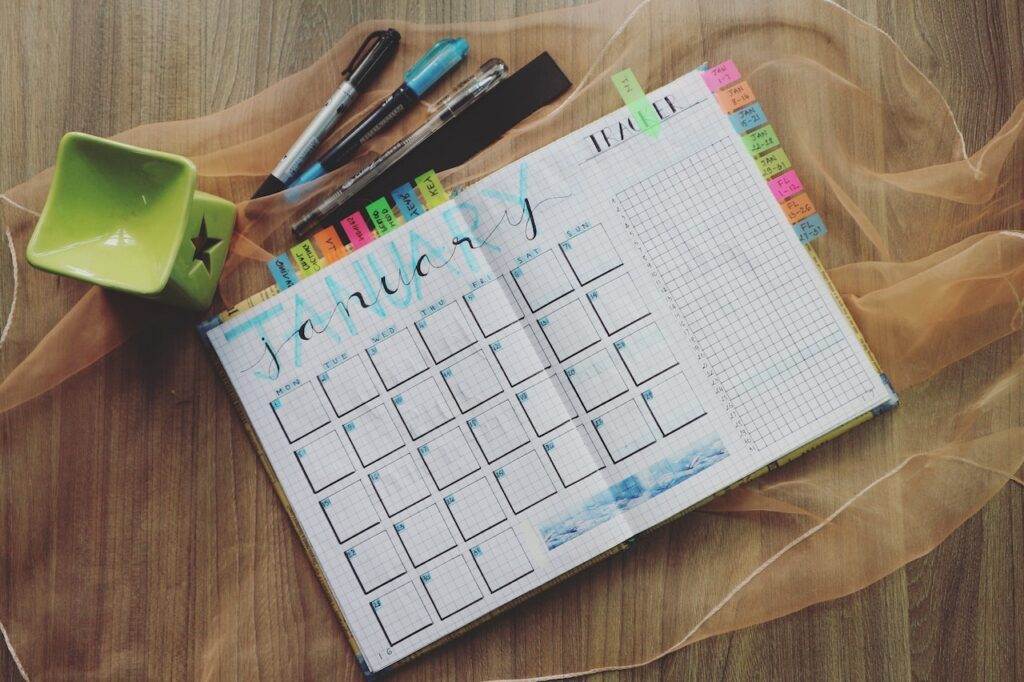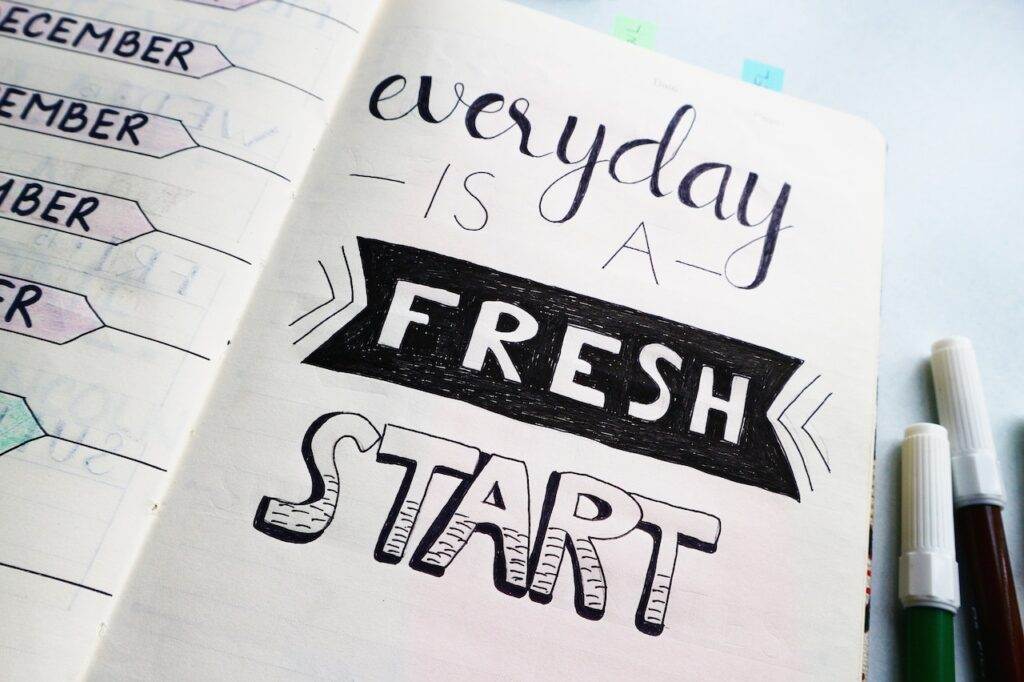Setting up a workout schedule is one of the most important aspects of achieving your fitness goals. It can help keep you on track and ensure that you are making progress towards your desired results. However, creating a workout schedule can be overwhelming, especially if you are a beginner or have never done it before.
In this article, I will share some tips and strategies to help you set up a workout schedule that works for you. We will cover topics such as understanding your fitness goals, creating a balanced routine, choosing the right time to exercise, prioritizing rest days, and monitoring your progress. By the end of this article, you will have a clear idea of how to set up a workout schedule that is tailored to your needs and goals.
Key Takeaways
- Understand your fitness goals and create a workout schedule that aligns with them.
- Prioritize balance in your routine by incorporating strength training, cardio, and rest days.
- Monitor your progress regularly to ensure that your workout schedule is helping you achieve your desired results.
- If you want to lose weight, consider a supplement to kickstart your journey.
Understanding Your Fitness Goals
When it comes to setting up a workout schedule, it’s important first to understand your fitness goals. This will help you choose the right exercises, frequency, and duration of workouts. Here are two sub-sections to help you identify and set your fitness goals.
Identify Your Fitness Level
Before setting any fitness goals, it’s important to assess your current fitness level. This will help you determine what exercises to start with and how much intensity you should aim for. Here are some factors to consider when assessing your fitness level:
- Cardiovascular endurance: How long can you sustain physical activity before feeling fatigued?
- Muscular strength and endurance: How much weight can you lift, and for how many reps?
- Flexibility: How easily can you move your joints through their full range of motion?
- Body composition: What percentage of your body comprises fat versus muscle?
By assessing your fitness level in these areas, you can better understand where you need to focus your workouts.

Set Realistic Goals
Once you’ve assessed your fitness level, it’s time to set realistic goals. It’s important to set goals that are challenging but achievable. Here are some tips for setting realistic fitness goals:
- Be specific: Instead of saying, “I want to get in shape,” set a specific goal like “I want to run a 5K in under 30 minutes.”
- Make it measurable: Set a goal you can track, like lifting a certain weight or running a certain distance.
- Set a deadline: Give yourself a specific timeframe to achieve your goal.
- Be realistic: Don’t set a difficult or unrealistic goal. Start with small, achievable goals and work your way up.
Setting realistic goals will motivate you to stick to your workout schedule and see results.
Creating a Balanced Routine
When it comes to setting up a workout schedule, creating a balanced routine is crucial. A balanced routine should include strength training, cardio exercises, and flexibility and balance exercises. Here are some tips on incorporating each of these components into your workout schedule.
Incorporate Strength Training
Strength training is an essential part of a balanced workout routine. It helps build muscle, increase metabolism, and improve bone density. When incorporating strength training into your workout schedule, work for each major muscle group at least twice weekly. Here are some examples of exercises that target each muscle group:
| Muscle Group | Exercise |
|---|---|
| Chest | Bench press, push-ups |
| Back | Rows, pull-ups |
| Shoulders | Overhead press, lateral raises |
| Arms | Bicep curls, tricep extensions |
| Legs | Squats, lunges |
Include Cardio Exercises
Cardio exercises are important for improving cardiovascular health, burning calories, and increasing endurance. When incorporating cardio exercises into your workout schedule, aim for at least 150 minutes of moderate-intensity exercise or 75 minutes of vigorous-intensity exercise per week. Here are some examples of cardio exercises:
- Running
- Cycling
- Swimming
- Jumping rope
- Dancing
Add Flexibility and Balance Exercises
Flexibility and balance exercises are often overlooked but are important for overall health and injury prevention. When incorporating flexibility and balance exercises into your workout schedule, aim for at least 10-15 minutes daily. Here are some examples of flexibility and balance exercises:
- Yoga
- Pilates
- Tai Chi
- Stretching
- Balance exercises (e.g., standing on one leg, walking heel-to-toe)
By incorporating strength training, cardio exercises, and flexibility and balance exercises into your workout schedule, you can create a balanced routine to help you achieve your fitness goals.
Choosing the Right Time to Exercise

When setting up a workout schedule, one of the most important things to consider is the time of day you plan to exercise. Different people have different preferences, and there is no one-size-fits-all answer to this question. However, there are a few things to keep in mind that can help you choose the right time for you.
Firstly, consider your own natural rhythms. Some people are morning people, while others are night owls. If you are naturally more alert and energetic in the morning, you may find that working out first helps you start your day off on the right foot. On the other hand, if you tend to feel more awake and alert in the evenings, you may prefer to exercise after work or in the evening.
Another factor to consider is your schedule. If you have a busy job or family commitments, you may need to be flexible about when you exercise. In this case, it can be helpful to look for pockets of time in your day when you can fit in a workout, such as during your lunch break or after your kids have gone to bed.
It’s also important to consider the type of workout you plan to do. If you are planning a high-intensity workout, you may find that you have more energy and stamina earlier in the day. On the other hand, if you are planning a more relaxing or restorative workout, such as yoga or stretching, you may find that the evening is a better time to exercise.
Ultimately, the most important thing is choosing a time that works for you and you can stick to it consistently. Whether you prefer to exercise in the morning, afternoon, or evening, the key is to make it a habit and prioritize your health and fitness.
Prioritizing Rest Days
As important as it is to stick to a workout schedule, it’s equally important to prioritize rest days. Rest days give your body time to recover and rebuild, helping to prevent injury and burnout. Here are some tips for prioritizing rest days in your workout schedule:
- Schedule rest days in advance: Whether you use a paper planner or a digital calendar, make sure to schedule your rest days in advance. This will help you stay committed to taking time off and prevent you from over-exerting yourself.
- Listen to your body: Pay attention to how your body feels. If you’re feeling tired or sore, take a rest day. Pushing yourself too hard can lead to injury and setbacks in your fitness journey.
- Incorporate active recovery: On your rest days, consider incorporating some light physical activity like yoga, stretching, or walking. This can help enhance blood flow and expedite the recovery process.
- Plan rest days strategically: Depending on your fitness level and goals, you may need more or less rest days. Novice exercisers may only need three workouts per week with rest days in between, while more advanced exercisers may need four to six workouts per week with a combination of active and complete rest days.
Remember, rest days are just as important as workout days. Prioritizing rest days in your workout schedule can help you stay healthy, prevent injury, and reach your fitness goals.
Monitoring Your Progress
Tracking your progress is an essential part of reaching your fitness goals. It helps you identify what’s working and what’s not, and adjust your workout schedule accordingly. Here are some tips on how to monitor your progress:
Track Your Workouts
Keeping a record of your workouts is an excellent way to monitor your progress. You can use a notebook, a spreadsheet, or a fitness app to track your exercises, sets, reps, and weights. Doing so lets you easily see how much you have improved over time and identify areas that need more work.
Here are some things you should track when monitoring your progress:
- The exercises you performed
- The number of sets and reps you completed
- The amount of weight you lifted
- The duration of your workout
- Your heart rate and other vital signs

Adjust Your Schedule as Needed
As you progress, you may need to adjust your workout schedule to keep challenging your body. If you are plateauing or not seeing the desired results, it may be time to change things. Here are some ways to adjust your workout schedule:
- Increase the weight you lift
- Add more sets or reps
- Try new exercises or variations of existing ones
- Change the order of your exercises
- Increase or decrease the duration of your workouts
Remember, it’s essential to listen to your body and make changes gradually. Don’t push yourself too hard, too fast, as it can lead to injury or burnout. Instead, make small adjustments and monitor your progress to see how your body responds.
You can stay motivated and on track toward reaching your fitness goals by monitoring your progress. Use these tips to track your workouts and adjust your schedule to keep challenging your body.
Conclusion
In conclusion, setting up a workout schedule is crucial for achieving fitness goals. It helps to keep you motivated, on track, and accountable. Following the steps outlined in this article, you can create a workout schedule that works best for you.
Remember to start slowly and gradually increasing your workouts’ intensity and duration. Combine strength training and cardiovascular activity for a well-rounded workout routine. Stretching before and after your workouts to prevent injury and improve flexibility.
Planning ahead and scheduling your workouts in advance can help you stay committed and make exercise a habit. Consider incorporating interval training and strength training into your routine for maximum results. And don’t forget to adjust your workouts as needed to continue challenging your body and avoiding boredom.
Incorporating regular physical activity into your daily routine can benefit your overall health and well-being. It can improve your mood, boost energy levels, and reduce your risk of chronic diseases. So, take the first step towards a healthier lifestyle and set up your workout schedule today!
Frequently Asked Questions
What are some examples of exercise programs for building muscle?
Many different exercise programs can help you build muscle. Some popular options include weightlifting, bodyweight training, and resistance band workouts. It’s important to choose a program that aligns with your fitness goals and abilities and gradually increase your workouts’ intensity and duration over time.
How can I create a workout plan for weight loss?
To create a workout plan for weight loss, focus on exercises that burn calories and increase your heart rate. Cardiovascular exercises like running, cycling, and swimming are great options, as are high-intensity interval training (HIIT) workouts. Incorporating strength training exercises to build muscle and boost your metabolism is also important.
What should a beginner include in their workout schedule?
If you’re a beginner, it’s important to start slowly and gradually increase your workouts’ intensity and duration over time. Some good exercises in your workout schedule might include walking, jogging, cycling, or swimming. You might also want to try bodyweight exercises like push-ups, squats, lunges, or yoga and Pilates classes.
How can I set up an effective workout schedule at home?
To set up an effective workout schedule at home, you should first identify your fitness goals and choose exercises that align with those goals. You might also want to invest in basic equipment like dumbbells, resistance bands, or a yoga mat. Creating a schedule to stick to and gradually increase your workouts’ intensity and duration over time is important.
What is a good 5-day workout routine for overall fitness?
A good 5-day workout routine for overall fitness might include a combination of cardiovascular exercises like running or cycling, strength training exercises like weightlifting or bodyweight training, and flexibility exercises like yoga or Pilates. It’s important to vary your workouts and challenge your body in new ways to avoid plateaus and achieve optimal results.
What is a recommended body part split for a 5-day workout schedule?
A recommended body part split for a 5-day workout schedule might include targeting different muscle groups on different days. For example, you might focus on chest and triceps on Monday, back and biceps on Tuesday, legs on Wednesday, shoulders on Thursday, and abs and core on Friday. It’s essential to vary your exercises and rep ranges to challenge your muscles and avoid overuse injuries.

